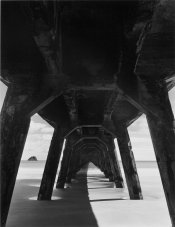Yes the filter holder attaches to the outside of the lens so can be adapted to a wide range of lenses.
Sorry, but I have only used the Kodak gel filters and have never looked for circular glass filters. The Kodak filter holder fitted all of my 5 x 4" lenses when I used to do landscape photography.
Sorry but I disagree. There is a clear difference to be seen in the spectral characteristic graphs produced by Kodak. Whilst the Wratten 12 (Minus Blue) falls within a sequence of ascending Wratten numbers that go through from light yellow to red, the difference between the filters is not their 'darkness' or 'colour' but rather the position of the absorption edges in their spectral transmission curves. In contrast to other yellow, orange and red filters, the Wratten 12 (Minus Blue) filter blocks all visible blue light and passes green, red and infrared light.
Given that practical results are the best indicator of how anything really works (as opposed to graphs and formulas) in the field, the Wratten 12 (Minus Blue) produces a much more pronounced effect (in terms of reducing blue) than the (visibly darker looking) Wratten 15 (Dark Yellow) filter and is more akin to the effect of a red filter but without blocking up the shadows and with a much lower filter factor than the red filters.
Where one sees the difference most clearly is in Colour Infra-Red photography where only the Wratten 12 (Minus Blue) blocks all of the blue light - incidentally, this is why the military still use Colour Infra-Red film with a Wratten 12 (Minus Blue) filter because it is almost impossible to replicate the camouflage-revealing effect when using digital sensors.
I personally would recommend photographers try out the Wratten 12 (Minus Blue) - pick up a cheap gel version from the web - and believe that, especially with a filter factor of x1, they will be really surprised at the results.
Bests,
David
www.dsallen.de











 I'll do a test and post it
I'll do a test and post it  77mm please
77mm please 